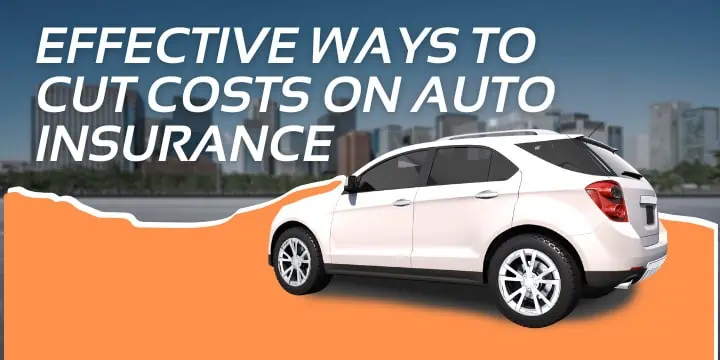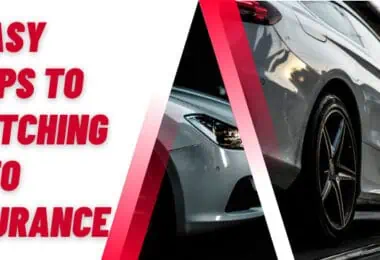Securing adequate car insurance is undeniably crucial, but there’s no need to break the bank for it. Understanding the factors influencing auto coverage rates and employing savvy shopping tips can lead you to the most cost-effective car insurance policy tailored to your needs.
Within this article, the MarketWatch Guides Team will illuminate proven strategies for saving money on car insurance. We’ll delve into the average costs of auto coverage and dissect the components that contribute to the final price. When you’re prepared to explore available options, consult our rankings of the top car insurance companies to make an informed decision.
Standard Auto Insurance Costs
Before embarking on your quest for the most competitive rates, it’s beneficial to understand the average car insurance expenses. Based on our estimations, the average 35-year-old American driver with a clean driving record and good credit pays approximately $2,008 annually or $167 monthly for comprehensive car insurance. For those opting for minimum liability coverage, the national average stands at $627 per year or $52 per month.
Determining Factors in Car Insurance Rates
The cost of your car insurance involves various considerations, and being aware of factors within your control can assist in securing more budget-friendly rates.
Here are key elements that insurance providers take into account when determining coverage rates:
- Location: Car insurance expenses vary depending on the state and city of residence. Urban areas often incur higher auto insurance rates, while those in more rural locales tend to enjoy more economical prices.
- Age: Both young and elderly drivers typically face heightened auto insurance rates, given the perception of higher risk. Additionally, new drivers, regardless of age, commonly experience elevated auto insurance costs.
- Driving Record: The presence of at-fault accidents, moving violations, or a DUI/DWI conviction on your record will result in increased costs for a car insurance policy.
- Credit History: A robust credit score serves as an indicator of a reliable and financially responsible driver, leading to lower auto insurance policy costs. Conversely, a poor credit score may elevate rates, with exceptions in California, Hawaii, Massachusetts, and Michigan.
- Vehicle Type: Drivers of new or expensive vehicles frequently encounter higher insurance premiums due to the increased costs of repairs following an accident.
- Deductible: While you can typically choose the amount paid out of pocket for a covered repair, opting for a lower deductible often corresponds to a higher premium.
Finding the Right Amount of Car Insurance Coverage
You have the flexibility to select your desired level of insurance coverage, provided you adhere to your state’s minimum requirements. Most states mandate liability car insurance, covering personal injury and property damage resulting from accidents you cause. In certain states, there’s a requirement for underinsured or uninsured motorist coverage, offering assistance with medical expenses and repairs if an at-fault driver lacks adequate insurance.
Opting for full coverage car insurance extends beyond liability coverage, encompassing collision protection and comprehensive coverage. Collision insurance addresses damage to your vehicle caused by collisions with other cars, objects, or structures. Meanwhile, comprehensive insurance safeguards your car from environmental damage, vandalism, and incidents involving animals or parked cars.
In our 2022 car insurance survey, which surveyed 1,000 drivers, two-thirds of respondents indicated a preference for purchasing full coverage insurance. It’s worth noting that if you finance a vehicle, lenders typically mandate the maintenance of full coverage until the loan is fully paid off.
Effective Ways to Cut Costs on Car Insurance
When seeking affordable car insurance, comparing quotes from various providers is a reliable approach, but it’s not the sole method for securing lower rates. Here are additional ways to trim your car insurance costs without compromising the quality of your coverage:
- Conduct thorough research: Ensure you understand the required coverage in your state and assess the appropriate amount based on your financial situation. Consider what you can realistically afford to pay out of pocket in the event of significant vehicle damage.
- Explore local alternatives: While major insurance providers may not always offer the lowest rates, local insurance agents and smaller companies might better suit your needs.
- Hunt for discounts: Most insurers provide various car insurance discounts, such as multi-vehicle, multi-policy, military, homeowner, good student, customer loyalty, and safe driver discounts. Inquire about these discounts with potential new providers, and remember to ask your existing insurer if you qualify for savings.
- Consider usage-based programs: Many insurance companies offer mileage-based discounts and telematics insurance programs to help you save money. If your annual mileage is below average or you consistently practice safe driving habits, tracking your driving through a company-provided app or telematics device could lead to lower premiums.
- Increase your deductible: Opting for a higher deductible results in lower premiums. Keep in mind that a higher deductible means more out-of-pocket costs if you file a claim, so find the right balance between risk and savings.
- Take a driver safety course: Many insurance companies offer discounts to customers who complete safe driving courses. Even with a clean driving record, a defensive driving course could make you eligible for significant savings.
- Install an anti-theft device: Some insurance providers offer discounts for drivers who install anti-theft devices in their vehicles. Verify which devices qualify for these discounts.
- Improve your credit score: While a more long-term strategy, actively working to enhance your credit score can gradually lower your insurance rates in most states.
- Adjust coverage as needed: Comprehensive and collision coverage may be less crucial for older cars. Regularly review your coverage to ensure you’re not paying for more than necessary.
Effective Ways to Cut Costs on Car Insurance: The Key Takeaways
While numerous factors impact your insurance costs, securing an economical auto insurance policy is possible with the right approach. A key strategy is to explore and compare car insurance quotes from various providers, enabling you to identify the optimal choice for your specific needs.







